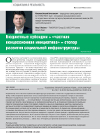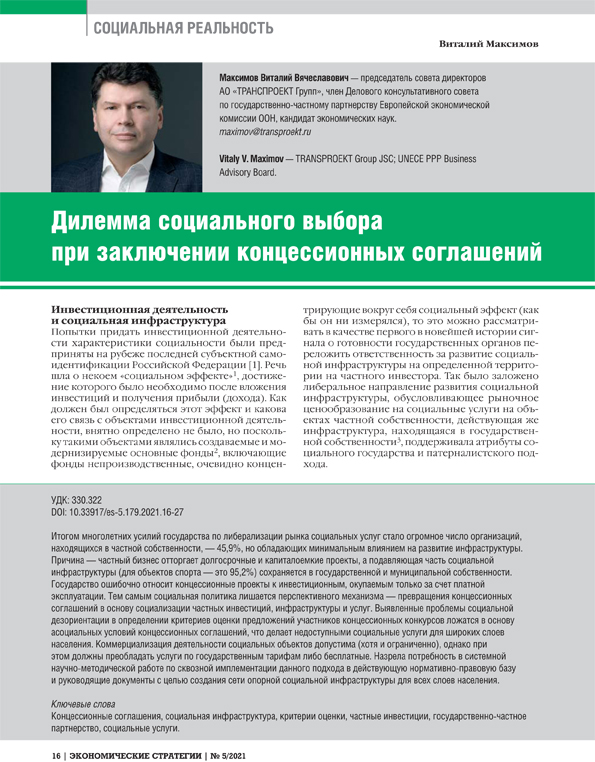The Public-Private Partnership Market as a Factor of Economic Growth in the Regions
DOI: https://doi.org/10.33917/es-5.185.2022.12-21
The purpose of this article is to assess the regions of the Russian Federation by the level of PPP development from the perspective
of their infrastructural and socio-economic development and the impact of PPP on accelerating their economic growth. To do this, the following tasks are being implemented: assessment of the general characteristics of the PPP market for the period 2006–2021, in particular, public and private contributions to PPP projects, distribution of investments in the areas under consideration; analysis of accumulated investments in the PPP market for the period 2006–2021, assessment of their impact on investment attractiveness and economic growth of regions based on the distribution by federal districts and regions of the Russian Federation; analysis of the market of large PPP projects for the period 2006–2021 from the position of influence on the strategic development of regions, its distribution by federal districts and regions of the Russian Federation; based on the results of the study, determining the top 10 most developed regions for the use of PPP mechanisms.
The methodology of the study is an analysis of the distribution of the classical PPP market by regions and districts based on the
construction of tables and diagrams. To characterize the overall economic and infrastructural development of the regions, PPP
projects in the housing, social, transport and IT spheres were considered.
The results of the study are that the assessment of the level of economic and infrastructural development of the regions is given; the strategic importance of PPP projects for the regions (especially large ones) is substantiated; it is determined that the successful implementation of PPP projects is a factor in the economic growth of the regions. Based on the analysis, the 10 most developed regions are identified from the point of view of the use of PPP mechanisms. The perspective of the study is to use its results to expand the PPP market, in particular, in territories in need of economic development. At the same time, in order to expand the territorial coverage of the PPP market, it is necessary to create conditions for the implementation of such projects in order to ensure the economic growth of the regions.
References:
1. Chumakov I.I. Gosudarstvenno-chastnoe partnerstvo kak osnovnaya forma partnerstva gosudarstva i biznesa [Public-private Partnership as the Main Form of Partnership Between the State and the Business]. Aktual’nye problemy i perspektivy razvitiya ekonomiki: rossiiskii i zarubezhnyi opyt, 2017, no 11, 29–32.
2. Sukharev O.S. Instituty regional’nogo razvitiya: kontseptual’no-prakticheskii analiz organizatsionnykh izmenenii [Regional Development Institutions: Conceptual and Practical Analysis of Organizational Changes]. Ekonomicheskii analiz: teoriya i praktika, 2012, no 4 (259), pp. 2–12.
3. Sukharev O.S., Voronchikhina E.N. Tipy tekhnologicheskogo razvitiya regionov: struktura tekhnologii i investitsii [Types of Regions’ Technological Development: Structure of Technologies and Investments]. Investitsii v Rossii, 2019, no 7, pp. 24–36.



















